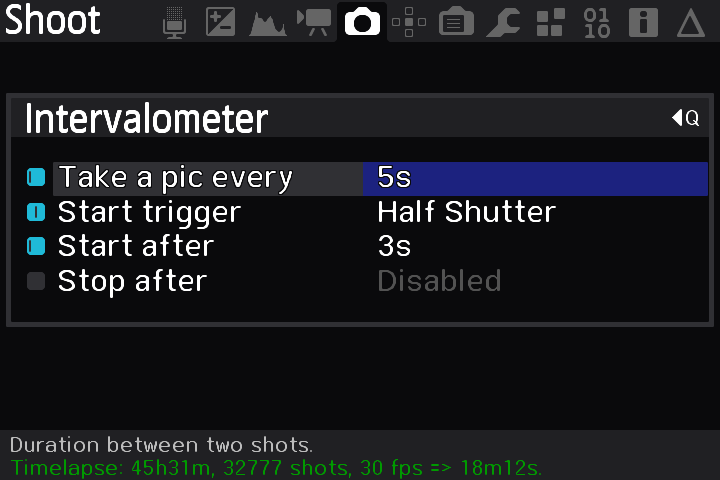My Love For Timelapses
Ever since I made my first timelapse of a sunset, I fell in love with this form of recording stuff. In this article I will share my experience with timelapses, and how you can improve yours.
2025. 03. 07.
What is a timelapse?
I've seen many people get this wrong, but a timelapse is not a fast forwarded video clip. Well, depending on how you fast forward the video, it can be. Normally, a timelape is an ultra low framerate video which is then sped up to a normal framerate. For instance, if you take one frame every 5 seconds, then at 30 fps the final clip will be 150 times faster, or 150 times shorter than real life.
Many cameras have support for this function, either by recording video at ultra low framerates, or by taking an exposure every couple of seconds. My camera didn't have this by default, but Magic Lantern saved the day once again, as it has a mostly great intervalometer.

My First Timelapse
There were a lot of mistakes which were made, but I will mention them later.
So what could've I messed up here? Honestly, it was basically everything. It was a dark uneventful day, the sun wasn't visible but the clouds weren't interesting either, the whole thing was underexposed, and I set the exposure to manual, as for some reason I thought the exposure wouldn't change during a sunset, which made the only exciting part of the video unwatchable. Yeah, not too glorious.
The Quest For The Perfect Clouds
Seeing that abomination, I wanted to up my game and get a good timelapse of the clouds rolling by. Every single day I put out my camera in the afternoon and would take it in before the sun set. I also switched from Manual to Aperture Priority, which presented new problems, but at least it was better than before.
This time the scene was actually interesting, as it had a lot of snow. The clouds didn't improve much, but oh well. I really liked that one column of smoke which raised right at the end.
Faster Scenes
Taking shots of the clouds rolling around is cool, but it got boring after a while. One day though, I had my tripod and my camera, and was about to head home when I just set it up out of curiosity to record the traffic in Itaewon. These were my favourites so far.
This time I didn't have more time to record for longer, so the first clip is quite short compared to the other one. This was also the first time I learned about the importance of Shutter Speed.
Most people on the internet will teach you about the 180° shutter rule, basically set your shutter speed to 1/double your framerate. For most stuff, this works fine, especially when working with 24 or 30 fps clips. Now, if I took the standard 1/60 shutter speed for 30 fps and set it for my timelapse video, it would look off as there isn't enough motion blur. Basically now you need to set your shutter speed to your interval divided by 2. For me this was 3 seconds / 2 so around 1.5 seconds.
You can use anything to achieve this shutter speed, low aperture, ND filters, or just shooting in the dark. It isn't important when you are just shooting the clouds which move slowly, but if you want to shoot fast moving vehicles, you need good motion blur to make it convincing.
Another thing I want to mention is image quality: I set my camera to record to Coarse Large JPEG. Basically the full resolution but lower quality. This is so that I can crop deep into the image in post, or do a keyframe motion across it without losing resolution. I use FFMPEG to put together the frames, which compresses the video, so I don't have a lot to lose from using lower quality JPEGs.
My Best So Far
This was my latest attempt. I went to Itaewon after a dinner with my sports team, set up my tripod, and waited a solid 20 minutes for all the images to get taken.
If I take just one of the frames of the video, it is crazy how much motion blur is present. Yet when the video is played at full speed, it looks normal.
I don't know why but I just love this video type. It is really time consuming both to make and to post process, but the results speak for themselves.
© Balazs Pusztai 2025
